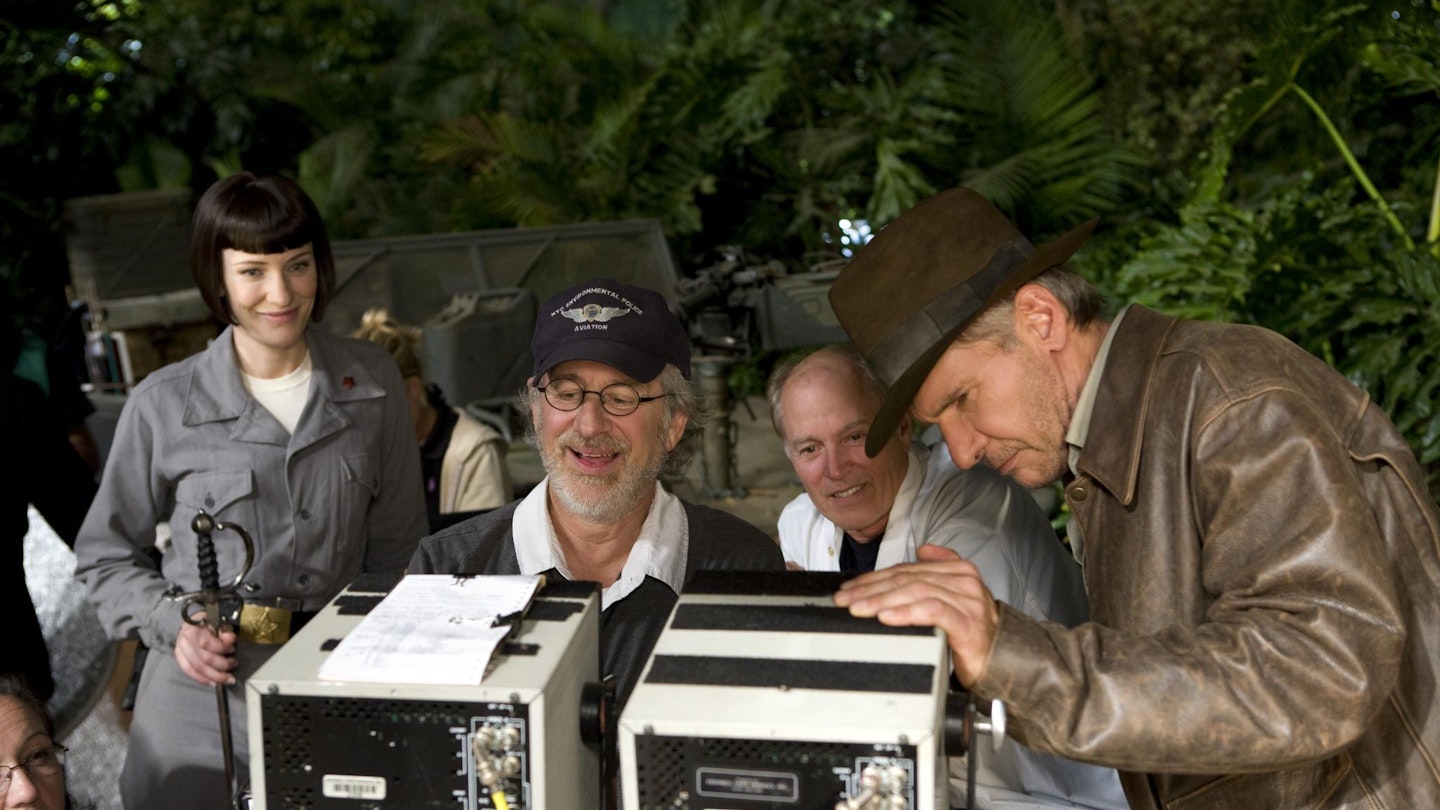The heart. Everyone remembers the bit with the heart. So it's only fair that affairs of it is where we'll begin.
The early 80s saw Steven Spielberg in something of a spin. Having split from Amy Irving after a fateful trip to Japan in 1980 (thus also nixing the plans for her to co-star in Raiders), three years later the pair ran into each other again at Los Angeles airport. He was en route to location scout Temple Of Doom, and was single again after a brief dalliance with Barbra Streisand. She had just returned from the sunny climbs of TV-movie The Far Pavilions and was looking particularly stunning... Seconds out, Round 2.
But then, of course, there was Kate Capshaw. A struggling actress, she may not have been the girl that Spielberg and producing partner Kathleen Kennedy had been expecting for audition (there was a mix up of publicity photographs), but she nevertheless wowed him as the prospective Willie Scott, Indiana Jones' future paramour for the sequel/prequel. Fine, so they didn't marry until October 1991, but the seeds (of the emotional variety, anyway) had surely been sown.
Throw into the mix the very public charges of "conspiracy to illegally employ children" then being aimed at Twilight Zone: The Movie (perhaps it's little wonder that Temple Of Doom should focus on enslaved children) and one thing is clear: in the build-up to the second outing for the fedora clad archaeologist, Steven Spielberg was riding something of a personal rollercoaster. Or, if you'd prefer, a mine cart without any brakes.Initially cooked up by Spielberg, George Lucas and Lucas' American Graffiti (1973) cohorts Willard Huyck and Gloria Katz, over a single week of script meetings at Lucas' Northern California pad, the first draft of Temple Of Doom was complete some six weeks later. Approximately 4000 storyboards would soon follow, rendering this possibly the most pre-planned movie in Spielberg's canon. And while the director would later enlist John Milius for a swift dialogue polish, one thing was immediately apparent: Dr. Jones was in for a very dark time indeed.
And although its original title was eventually deemed too bleak for a family-orientated summer blockbuster (The Temple Of Death became instead merely one of Doom), Spielberg and co.'s early decision to inject a pervading strain of cartoon violence very much lived on. The result was the introduction of the PG-13 rating in the US (Gremlins is also cited as a contributory movie) and numerous public retractions from the director. Even if he did later go on record to observe that, "The picture is not called The Temple Of Roses, it's called The Temple Of Doom."
Indeed, its grottiness is just one of Temple's greatest fortes. A frenetic, ghoulish, fantastical romp straight from the stuff of childhood dreams — and not nightmares, as was originally decried — this is Spielberg at his most freewheeling. A fact apparent from an opening sequence in which Capshaw warbles a rendition of Cole Porter's Anything Goes (in Cantonese), and in doing so perfectly
sums up the film's no-holds-barred ethos. Monkey brains and impromptu open heart surgery? Well, you were warned.
There are, however, occasional downsides. Indy's chief adversary, Mola Ram, is underwritten to the point of insignificance, and compare Willie to Raiders' Marion and she comes off as a shrieking violet. Likewise, the claims of racist stereotyping that peppered the production (much was shot in Sri Lanka after the Indian government, concerned by what they felt to be a xenophobic script, refused permission to shoot) still carry some weight, and too often the wonderment of the original is replaced by gung-ho action. In fact, if reintroducing certain sequences intended for Raiders, but scrapped for budgetary reasons (the mine carts, the life raft from a plane), certainly raise the bar in the adrenaline stakes, there is an argument that a proportion of character based exposition in turn falls by the wayside.
Naturally, this is but minor carping. Adhering to a similar dramatic arc to Lucas' Star Wars trilogy, Temple Of Doom is easily the most enticingly sinister. It features the most sizzling chemistry of the three — with Ford even managing to appear game despite the ruptured disc he suffered after performing many of his own stunts — and, courtesy of Indy and Short Round, generally hilarious repartee.
Most significantly, though, Temple Of Doom's box office success both justified MCA's $3.6 million thank you for E.T. —the Amblin Headquarters — and re-established Spielberg as King Of The Blockbusters, after the Twilight Zone debacle. It was a title he certainly needed to reclaim before embarking on his artistically commendable, but commercially unlikely, double bill of The Colour Purple and Empire Of The Sun. And one which maybe best sums up his enduring work ethic: Fortune and glory, kids. Fortune and glory

